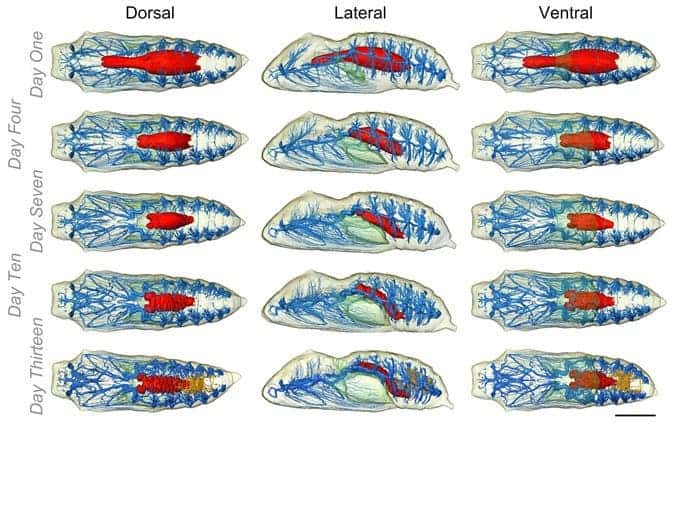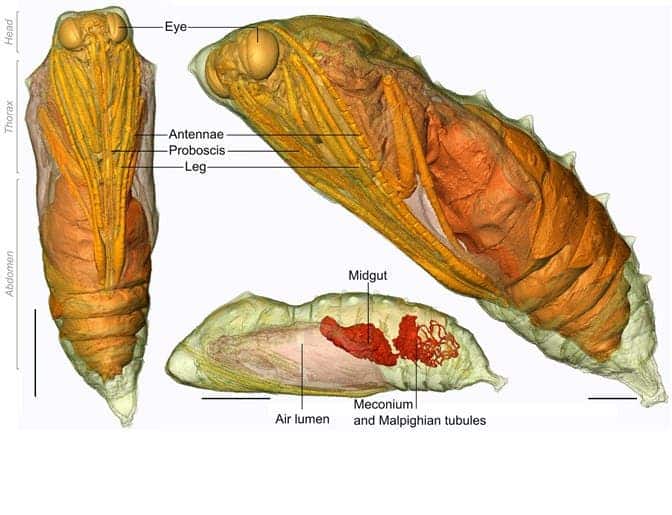
Metamorphosis
Serving as one of the strongest metaphors nature has to offer, at the later stages of its evolution the caterpillar – a soft bodied, not very pretty, ground based insect – morphs into a butterfly – a majestic flying insect of varying coloring and shape. What exactly goes inside the chrysalis the caterpillar wraps itself with for the many weeks required for metamorphosis remains a mystery, though.
Recently, a mixed team of entomologists and geologists used high resolution computer tomography (CT) to image in real time the development stages of the painted lady butterfly (Vanessa cardui), mapping each individual change as it happened.
“The crucial thing in this case is that they examined live material,” said Rolf Beutel, a professor of entomology at Friedrich Schiller University of Jena in Germany, who was not involved in the study. “This is really exciting.”
Saying that researchers had no idea what happens during metamorphosis isn’t exactly fair. The process is very well documented and its stages have been rather well defined many years ago through means of dissection. Traditionally, a biologist looking to study an insect’s metamorphosis will collect many specimens of the same species and dissect their pupae at varying stages of development. But never before has metamorphosis been observed “in situ”. Of course, dissecting them also kills them, which is not only sad for the insects, but may alter the scientific information. This is why scientists wanted to observe it “live”.

Studying dead specimens offers a pretty reliable snapshot of the insect’s development stages, however there are many fine details that can only observed in living specimens and this is where CT came really in handy. The researchers did scans on nine painted lady chrysalises throughout their development while leaving one chrysalis alone as a control, all while trying to be very careful to keep the chrysalises healthy. CT radiation can interfere with their well being, and indeed four specimens scanned in their earliest stages of development perished, but the researchers accounted this to heat given off by the machine rather than radiation exposure.
“It’s basically the first time a CT has been used to look at the development of a single individual,” said Russell Garwood of the University of Manchester, a geologist who usually studies fossil insects and an author of the paper.
Eventually, one of the specimens stood out as having the most complete set of scans, so the researchers focused on assembling its data, comparing it with scans of other specimens to rule out any anomalies. As expected, no startling surprises occurred. Traditional dissection did a very good job at accurately describing metamorphosis. “We’re filling in the details rather than rewriting the story,” Garwood said.
What would prove to be truly interesting is performing CT scans of the insects while still in caterpillar form, however this proves to be extremely challenging since CT scans work poorly for subjects that tend to move all the time. Beutel is currently experimenting with using CT scans on anesthetized cockroaches.
Findings were reported in a paper published in the Journal of the Royal Society Interface via The Scientist.
Was this helpful?



